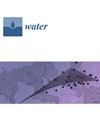更新阿联酋沙迦酋长国 IDF 曲线的必要性:根据最近的城市洪水对 2020 年 IDF 值的比较分析(2024 年 4 月)
IF 3
3区 环境科学与生态学
Q2 ENVIRONMENTAL SCIENCES
引用次数: 0
摘要
在干旱的阿拉伯半岛,尤其是在阿拉伯联合酋长国(阿联酋),人们对降雨的看法已经从自然的恩赐转变为对基础设施和社区抗灾能力的巨大挑战。2024 年 4 月 17 日史无前例的暴风雨暴露了阿联酋城市基础设施和洪水管理实践中的关键漏洞,揭示了在处理累积降水方面的巨大差距。本研究利用 2021 年至 2024 年 4 月的最新降水数据以及之前发布的 2020 年数据,对沙迦酋长国的降水强度-持续时间-频率 (IDF) 曲线进行了必要的更新。通过根据三个气象站的数据重新校准 IDF 曲线,本研究揭示了所有降雨持续时间和重现期的降雨强度都大幅增加。沙迦的降雨强度平均增加了 36.76%,Al Dhaid 增加了 26.52%,Mleiha 增加了 17.55%。这些增长表明,降雨事件有更加严重和频繁的趋势,因此迫切需要修改水文模型和基础设施设计,以提高抗洪能力。这项研究为阿联酋和全球类似地区的政策制定者、城市规划者和灾害管理机构提供了宝贵的见解。本文章由计算机程序翻译,如有差异,请以英文原文为准。
The Necessity of Updating IDF Curves for the Sharjah Emirate, UAE: A Comparative Analysis of 2020 IDF Values in Light of Recent Urban Flooding (April 2024)
In the arid Arabian Peninsula, particularly within the United Arab Emirates (UAE), the perception of rainfall has shifted from a natural blessing to a significant challenge for infrastructure and community resilience. The unprecedented storm on 17 April 2024, exposed critical vulnerabilities in the UAE’s urban infrastructure and flood management practices, revealing substantial gaps in handling accumulated precipitation. This study addresses the necessity of updating the Intensity–Duration–Frequency (IDF) curves for the Sharjah Emirate by utilizing recent precipitation data from 2021 to April 2024, alongside previously published 2020 data. By recalibrating the IDF curves based on data from three meteorological stations, this study reveals a substantial increase in rainfall intensities across all durations and return periods. Rainfall intensities increased by an average of 36.76% in Sharjah, 26.52% in Al Dhaid, and 17.55% in Mleiha. These increases indicate a trend towards more severe and frequent rainfall events, emphasizing the urgent need to revise hydrological models and infrastructure designs to enhance flood resilience. This study contributes valuable insights for policymakers, urban planners, and disaster management authorities in the UAE and similar regions worldwide.
求助全文
通过发布文献求助,成功后即可免费获取论文全文。
去求助
来源期刊

Water
WATER RESOURCES-
CiteScore
5.80
自引率
14.70%
发文量
3491
审稿时长
19.85 days
期刊介绍:
Water (ISSN 2073-4441) is an international and cross-disciplinary scholarly journal covering all aspects of water including water science and technology, and the hydrology, ecology and management of water resources. It publishes regular research papers, critical reviews and short communications, and there is no restriction on the length of the papers. Our aim is to encourage scientists to publish their experimental and theoretical research in as much detail as possible. Full experimental and/or methodical details must be provided for research articles. Computed data or files regarding the full details of the experimental procedure, if unable to be published in a normal way, can be deposited as supplementary material.
 求助内容:
求助内容: 应助结果提醒方式:
应助结果提醒方式:


